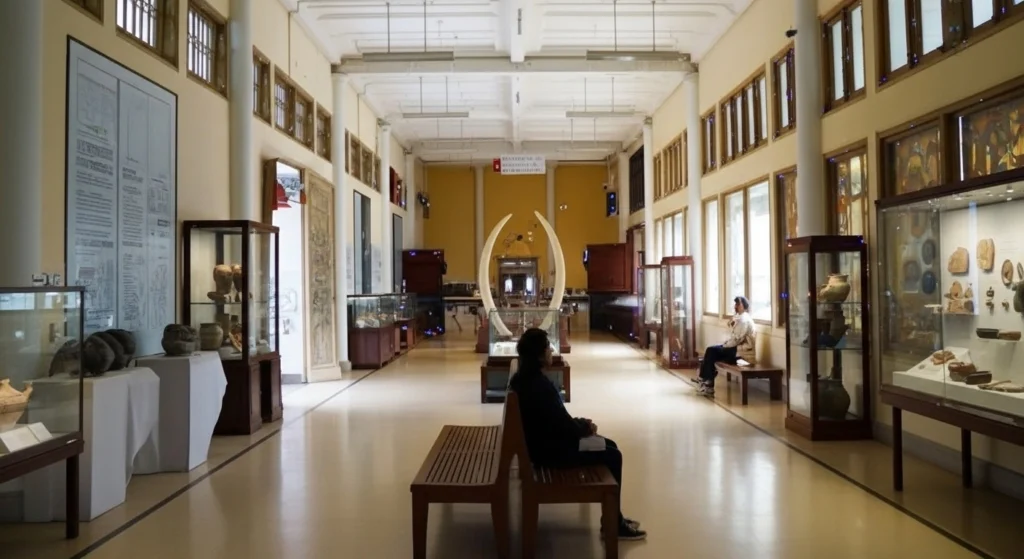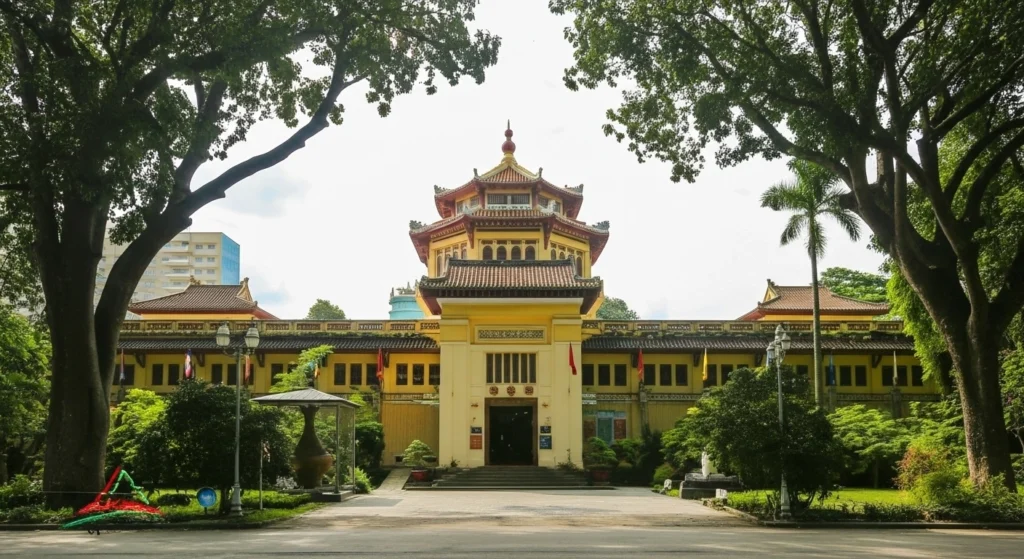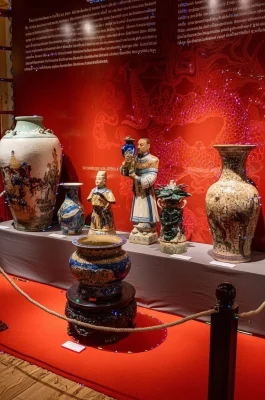An Architectural Narrative
The museum’s stately building is a historical artifact in itself. Constructed in 1929 by the French colonial government, it showcases a striking architectural style known as Indochina-revival, a deliberate fusion of European classical design with distinct Oriental decorative motifs. The high ceilings, octagonal central tower, and thick walls were purposefully designed to suit the tropical climate while lending a grand, imposing atmosphere. Stepping into this structure, which was the first museum in Southern Vietnam, is a step back to the city’s colonial era before you even reach the first exhibit.

Tracing a Nation’s Timeline
The collections offer a profound and comprehensive look at the evolution of Vietnam and the southern region, starting from the earliest eras:
Ancient Civilizations: Explore priceless relics from the prehistoric period and ancient cultures, including the sophisticated Óc Eo culture (1st–7th century CE) of the Mekong Delta and the magnificent Champa civilization (2nd–17th century).
Imperial & Dynastic Eras: Discover artifacts that illustrate the development of the Vietnamese state through its dynastic periods, including the Nguyễn Dynasty, the country’s last royal family.
Cultural Crossroads: A unique section is dedicated to the cultures of Southern Vietnam and other Asian countries, showcasing a rare collection of Cambodian stone sculptures and Asian ceramics, highlighting the region’s historical role as a crossroad of trade and belief.

Essential Visitor Information
Location: The museum is perfectly situated right next to the Saigon Zoo and Botanical Gardens.
Address: 2 Nguyễn Bỉnh Khiêm, Bến Nghé, District 1, Ho Chi Minh City.
Opening Hours:
Days: Tuesday to Sunday (Closed on Monday).
Time: Generally 8:00 AM – 11:30 AM and 1:00 PM – 5:00 PM (Schedules are subject to change, so an early check is advisable).
Admission Fee (Approximate):
Adults: 30,000 VND
Students/Children: Discounted rates apply (approx. 15,000 VND).
Photography: An additional fee (approx. 20,000 VND) may apply for non-mobile cameras.
What to See: Don’t miss the exhibition dedicated to the Xóm Cải Mummy, a perfectly preserved local woman from the 19th century, or the outdoor area featuring remnants of historical military equipment. The English signage is generally clear, making it an excellent resource for understanding Vietnam’s deep history beyond the 20th-century conflicts.









